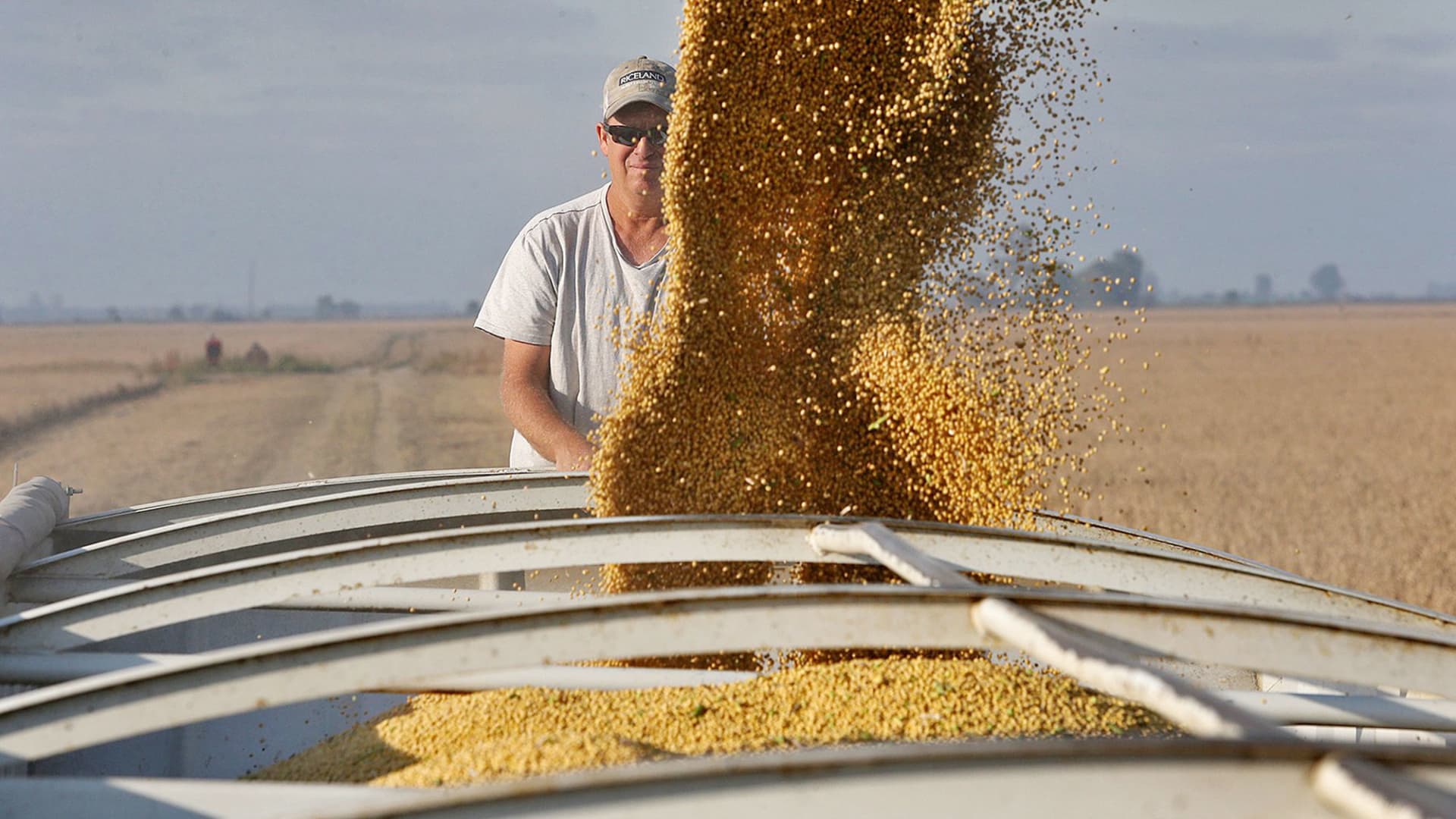Soybeans have become a cornerstone of American agriculture, contributing $124 billion to the U.S. economy in 2022, according to a study conducted by the National Oilseed Processors Association and the United Soybean Board.
“Soybeans’ contribution to the U.S. economy is only increasing day by day,” Himanshu Gupta, CEO and co-founder of ClimateAI, told CNBC.
The legume is hailed as a versatile crop used in food, fuel and animal feed worldwide.
“Soybeans are kind of that wonder crop that has amazing capabilities” Arlan Suderman, chief commodities economist at StoneX, told CNBC.
The U.S. wasn’t always a soybean-producing powerhouse.
“I’m old enough to remember when soybeans were an alternative crop that a few people were playing with back in the 1960s,” Suderman said.
Soybeans were once considered a niche crop before U.S. farmers realized their potential for animal feed, protein use and export value. Farms would see their soybean yields increase.
“The average soybean production in our county 40 years ago, in 1980, was 31 bushels. Today, that same acre produces 51 bushels on average,” Soybean farmer Meagan Kaiser and chair of the United Soybean Board, told CNBC. “Most of the time it’s much higher than that.”
The global soybean market exploded in recent years with U.S. production at the forefront.
For example, in the early 2000s, the U.S. made about $9 billion from all oilseed crop exports combined. By 2021, the cash coming in from soybean exports alone skyrocketed to $26.4 billion, according to the U.S. Department of Agriculture.
However, the U.S. has since lost its dominance, in part, thanks to its reliance on a single export market: China.
China is the largest importer of soybeans in the world, making up about 60% of the total soybean trade. According to data from the USDA, about half of the value of U.S. soybean exports head to China.
This trade relationship turned sour in 2018 as the U.S. entered a tit-for-tat tariff dispute with China, and soybeans were key to that fight.
China would turn to Brazil for soybeans, and now the South American country has become the world’s No. 1 producer and exporter of soybeans.
“Over 30 or 40 years, [Brazil] dramatically increased soybean acreage and production,” Joe Janzen, assistant professor at the University of Illinois and its FarmDoc project, told CNBC.
“Brazil is a relatively low-cost place to produce corn and soybeans,” Janzen said. “The export market is very competitive and we need to be cost competitive with Brazil and Argentina if we want to capture market share.”
The heated international competition has pushed the American market to explore alternative uses for soybeans, including biofuels, renewable diesel and bioplastics.
“In the next 10 years, we’re going to have a whole new generation of farmers … and they’re going to solve [problems] in a more efficient way,'” Kaiser said. “Ways that I probably can’t even imagine.”
Watch the video above to learn more about how the U.S. became a soybean stronghold before falling behind Brazil, the influence of China’s demand and why soybeans are critical for food security and a clean energy future.
